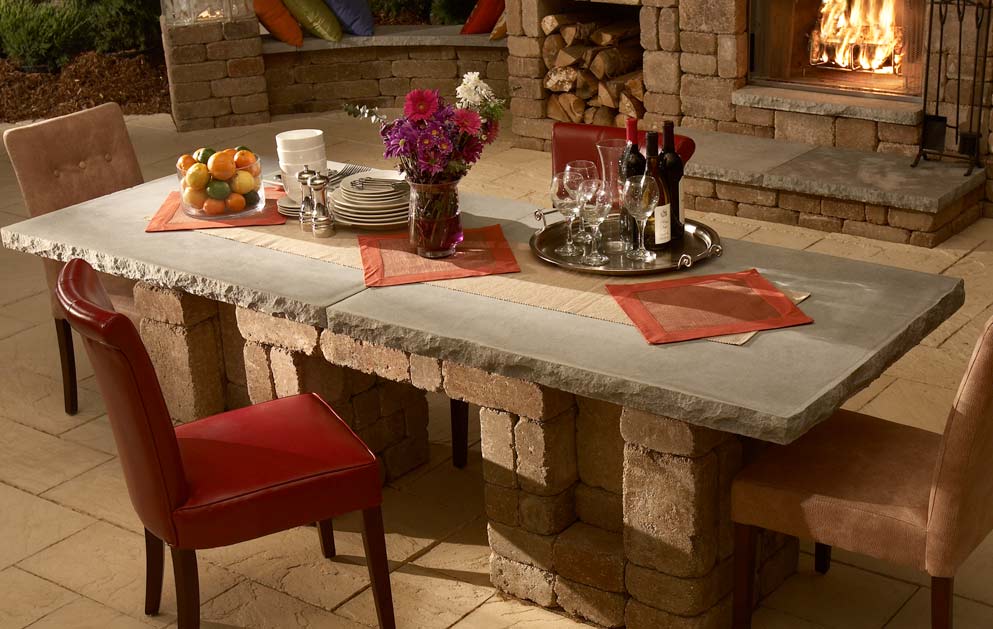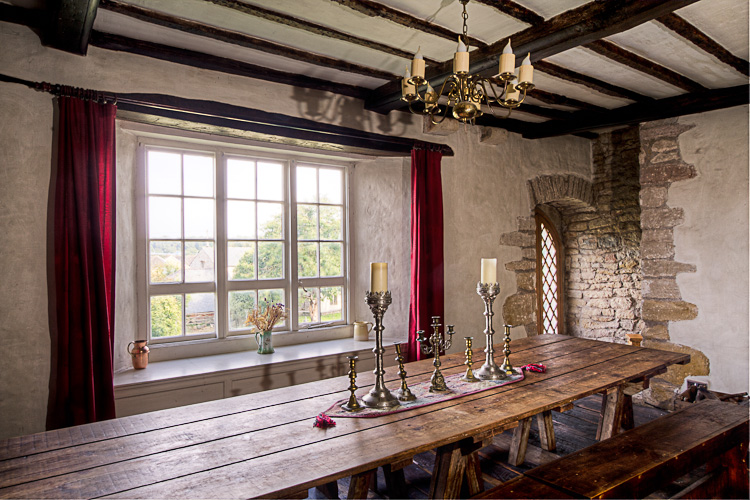The concept of bringing people together through dining has been alive for centuries and periods. The dining room is considered as one of the best places in every home wherein people, whether related by blood or not, share not only great food but satisfying stories and experiences as well. With this, making a dining room furnished with the best decors and accessories is essential to create a more remarkable dining experience among family members and guests.
Have you ever wondered how our early ancestors used to hold banquets? Are their dining rooms simple or luxurious? What kind of materials did they use for their tablewares? If you’re decorating your dining room with a touch of history, here are some of the ideas from the Stone Age, Ancient Greek Period, Medieval Period, and Italian Renaissance Period that you may emulate.
1. Prehistoric Period: Stone Age
Stone Age, from the term itself, is the era where our great ancestors utilized stones for hunting, eating, building their homes, and basically for survival. The period shows that prehistoric people were clever even before civilization took over.
It takes a lot of creativity and skill to pull off a stone age-inspired interior since you have to maximize the use of your primary element. Play with light neutral colors such as gray, brown, and beige and use different kinds of stones like granite, sandstone, limestone, and marble for your walls, floors, and pieces. You can also use a little bit of wood, metal, glass, and other modern elements in decorating since using mere stones can be too dull and uncomfortable.
Dining Room
Embracing the beauty of the stone age doesn’t mean you’re going to sacrifice comfort by having hard, pure stone chairs while eating. You may pair your marble or granite dining table with modern upholstered chairs that match the table’s color.
Pre-historic people used to sit on floors and heat their food on a bonfire. If you want to imitate the concept and add a modern twist, you may put a modern indoor fire pit or redecorate your fireplace with stacked stones. Finish your pre-historic-inspired dining experience off by using stone plates stone plates, utensils, pots, and vases. Marble pendant lights are also great additions.
Ancient History: Ancient Greek
High ceilings, sculptures of gods, goddesses, and philosophers, and lavish columns painted in cream – this is how most people look at Ancient Greek interior design.
If you want to achieve an Ancient Greek-inspired interior, stick to the neutral color palette, then use different shades of blue, gold, and burnt orange for your accents. Columns are also distinct Ancient Greek features you may include in your dining room.
Dining
Ancient Greeks, as well as Romans, have a unique way of eating during those times. They call their table “triclinium”, a dining table with couches along the three sides. The early people used to recline on those couches surrounding the dining tablewhile relaxing and eating.
In the present time, reclining during mealtimes may sound inappropriate. However, you can always adapt the idea of triclinium if you want to establish a Greek-inspired lounge. You may have a low rise square wooden table in the center surrounded by three chaise lounge chairs covered in velvet fabric. To complete your Ancient Greek-inspired dining room, don’t forget to fascinating sculptures, decorative columns, lavish pottery, embroidered tapestry, and pieces with “Greek key” designs.
Postclassical Era: Medieval
Castles, kings, and queens, and armored knights on horses – these are just some of the things that would probably pop into your mind when you think about the Medieval Period.
The interior walls and structures of the early castles use rough textures like limestones or granite. You may apply these stones on your stoves and fireplaces, which are the focal points of Medieval style room. Accents of deep reds, greens, golds, and silvers are used to spice up the room dominated by neutral tones.
Dining
As seen in Medieval-inspired films, people in the Medieval castles used to gather in “ The Great Hall” for dining and unwinding. You can have a replica of The Great Hall in your own home by using long trestle oak table and pair it with long benches. If you seek more comfort by allowing your back to rest, you may pair the wooden table with medieval throne chairs to mimic the royal banquet during the middle ages. For your tablewares, you may use silver, gold, and brass plates, goblets, and cutleries.
No LED lights were present during those times. Only candles placed on brass candelabra and medieval chandeliers with metal chains. Curtains and draperies with tassels as well as tapestries that display portraits of the nobles as well as heroic scenes from the past also transform one’s room from a modern abode to a royal Medieval castle.
Early Modern Period: Italian Renaissance
The era that created the brilliant artists, writers, and musicians people still look up to today – Renaissance period.
The interiors of Renaissance seem very loud, for they are filled with fabulous paintings and intricate sculptures, bold colors, and usage of expensive materials. Red, beige, and gold are the colors that you may use as accents to mimic this period’s interior.
Dining
Wood, especially the dark, long, and narrow trestle tables like willow or walnut, is ideal for your dining table. The table, adorned with intricate carvings and lavish inlays of gold, marble, ivory, and other precious stones are popular during this era. Combine the table with walnut dining chairs with upholstered seats and hand-carved wooden backrest. You may also rest a rug or mat with intricate patterns underneath the dining set. Why so luxurious? Renaissance Italians were known for extravagant feasts and banquets.
Whether you’re a Roman Catholic or not, you will find Leonardo da Vinci’s interpretation of “The Last Supper” worth displaying in your renaissance-inspired dining room. Accessorize the room with brass candelabra or chandelier, velvet curtains and draperies, a splendor tapestry, and classical art decors to emulate the interiors of this period.
Carmina Natividad is an all-around artist and writer who loves collecting vintage items and decorating her space with an eclectic approach. She shares her deep interest in interior design by writing informative blogs for Fab Habitat Outdoor Rugs Online, a one-stop shop for stylish outdoor rugs and mats throughout Australia.




